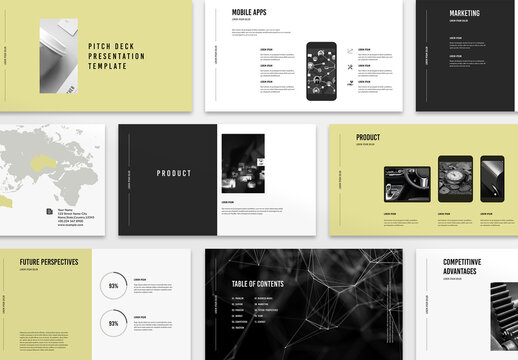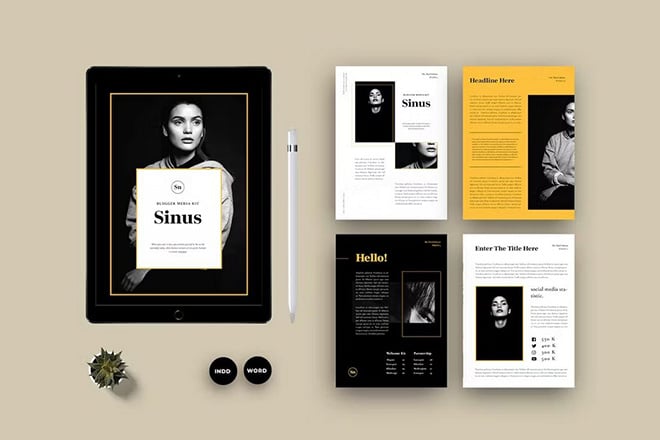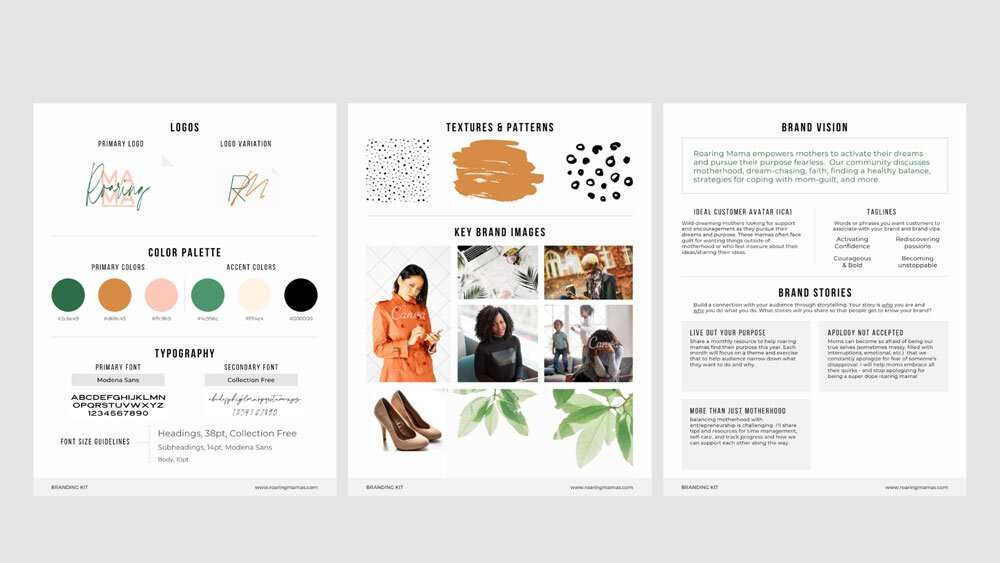Brand guideline examples
 Brand guideline design are essential documents that provide instructions and rules for using a brand’s visual identity consistently across various channels and platforms. Here are some examples of brand guideline elements that may be included in a typical brand guideline:
Brand guideline design are essential documents that provide instructions and rules for using a brand’s visual identity consistently across various channels and platforms. Here are some examples of brand guideline elements that may be included in a typical brand guideline:
- Brand Identity: This section defines the brand’s logo, logo variations, color palette, typography (fonts), and other visual elements that make up the brand’s identity. It includes specifications for logo usage, such as minimum size, clear space, and placement on different backgrounds.
- Brand Voice and Tone: This section outlines the brand’s personality, voice, and tone in written communications. It may include guidelines on language usage, messaging, and tone of voice to maintain consistency in all brand communications, from social media posts to website content.
- Brand Imagery: This section provides guidance on the type of imagery that aligns with the brand’s visual style. It may include guidelines on the use of photography, illustrations, graphics, and other visual elements that should be used consistently across all brand materials.
- Brand Applications: This section provides examples of how the brand identity should be applied across various mediums, such as print materials, digital assets, signage, packaging, and more. It may include mock-ups and visual examples of how the brand should be presented in different contexts.
- Brand Usage: This section provides instructions on how the brand identity should not be used. It may include guidelines on what not to do with the logo, color palette, typography, and other visual elements to avoid brand inconsistency or misrepresentation.
- Brand Templates: This section may include pre-designed templates for commonly used brand materials, such as letterheads, business cards, social media graphics, email signatures, and other branded assets. These templates ensure consistent brand representation across different touchpoints.
- Brand Strategy: This section outlines the brand’s overall strategy, mission, vision, and values. It may provide guidance on how the brand should be positioned in the market, its target audience, and its unique selling proposition (USP).
- Brand Legal and Trademark Information: This section may include information on the legal requirements and proper use of trademarks and copyrights associated with the brand. It may provide guidance on how to use the brand name, logos, and other intellectual property in compliance with the law.
- Brand Collaboration and Sponsorship: This section may provide guidelines for brand collaborations, partnerships, and sponsorships, including how to use the brand’s identity in conjunction with other brands or events, while maintaining brand consistency.
- Brand Management and Contact Information: This section may include information on who is responsible for managing the brand guidelines and whom to contact for questions, clarifications, or approvals related to the brand’s visual identity and usage.
These are just a few examples of the elements that may be included in brand guidelines. Each brand may have unique requirements based on its specific identity, industry, and target audience. Brand guidelines serve as a reference and a tool to ensure consistency and coherence in brand representation across all touchpoints, helping to build a strong and recognizable brand identity.
Canva brand guidelines
 Here general information on what brand guidelines typically include. Brand guidelines are a set of rules and standards that ensure consistent use of a brand’s visual and verbal identity across all communication channels. Here are some common elements that are typically included in brand guidelines:
Here general information on what brand guidelines typically include. Brand guidelines are a set of rules and standards that ensure consistent use of a brand’s visual and verbal identity across all communication channels. Here are some common elements that are typically included in brand guidelines:
- Logo usage: Brand guidelines often specify the correct and consistent usage of a company’s logo, including its size, placement, clear space, and variations (e.g., color, black and white, reversed).
- Color palette: The brand’s approved color palette, including primary and secondary colors, with corresponding color codes (e.g., RGB, CMYK, HEX) for use in different media.
- Typography: The approved fonts and typefaces for use in different applications, such as headlines, body copy, and captions, including font sizes and styles.
- Imagery and graphics: Guidelines for the use of images, illustrations, icons, and other visual elements that align with the brand’s style, tone, and aesthetics.
- Voice and tone: Guidance on the brand’s preferred language style, tone, and messaging, including key brand messages, taglines, and brand voice characteristics.
- Brand applications: Examples and guidelines for applying the brand identity across various touchpoints, such as print materials, digital assets, signage, packaging, and social media.
- Brand misuse: Clear instructions on what not to do with the brand, including restrictions on improper logo usage, color alterations, distortions, and other misrepresentations that could dilute the brand identity.
- Brand assets: Access to downloadable brand assets, such as logos, icons, images, and templates, in various file formats for internal and external use.
- Contact information: Contact details of the brand’s designated point of contact for inquiries related to brand guidelines, approvals, and usage permissions.
It’s important to note that brand guidelines may vary from one organization to another, and Canva’s specific brand guidelines may only be available to authorized users. If you are looking to use Canva’s brand assets or create content related to Canva, it’s best to refer to their official website or contact Canva directly for their up-to-date and official brand guidelines.
Why brand guidelines
 Brand guidelines, also known as brand standards or brand style guides, are a set of rules and instructions that outline how a brand’s visual and verbal elements should be used consistently across different mediums and channels. Brand guidelines serve as a reference for internal and external stakeholders, such as employees, contractors, partners, and vendors, to ensure that the brand is represented consistently and accurately in all communications and materials.
Brand guidelines, also known as brand standards or brand style guides, are a set of rules and instructions that outline how a brand’s visual and verbal elements should be used consistently across different mediums and channels. Brand guidelines serve as a reference for internal and external stakeholders, such as employees, contractors, partners, and vendors, to ensure that the brand is represented consistently and accurately in all communications and materials.
Here are some reasons why brand guidelines are important:
- Brand consistency: Branding style guides provide a clear and consistent framework for how a brand should be presented visually and verbally. Consistency in brand elements such as logo usage, color palette, typography, imagery, and tone of voice helps to establish and maintain a brand’s identity and recognition, which in turn builds brand trust and loyalty among consumers.
- Brand integrity: Brand guidelines help protect a brand’s integrity by setting standards for how the brand should be used and preventing misuse or misrepresentation. They ensure that the brand is presented in a professional and cohesive manner, maintaining its intended look, feel, and messaging across all touchpoints.
- Brand recognition: Consistent use of brand elements, as outlined in brand guidelines, helps to establish brand recognition. When consumers consistently encounter a brand with a consistent visual and verbal identity, they are more likely to remember and recognize the brand, leading to increased brand recall and awareness.
- Efficient brand implementation: Brand guidelines provide clear instructions and specifications for using brand elements, which makes it easier for internal and external stakeholders to create brand materials consistently and efficiently. This can save time and effort in the design and production process, and help ensure that brand materials are aligned with the brand’s identity and guidelines.
- Brand extension: If a brand decides to expand or evolve its offerings, brand guidelines can serve as a reference for how to extend the brand’s visual and verbal elements to new products, services, or markets. This helps maintain consistency and coherence across different brand touchpoints, even as the brand evolves.
In summary, brand style guide are important because they establish and maintain brand consistency, protect brand integrity, enhance brand recognition, enable efficient brand implementation, and facilitate brand extension. They serve as a valuable resource for maintaining a strong and cohesive brand identity, both internally and externally.
Brand guidelines definition
 Branding style guide also known as brand standards or brand style guides, are a set of established rules and guidelines that provide instructions on how a brand’s visual and verbal elements should be used consistently across various media and communications. Brand guidelines ensure that a brand’s identity is consistently represented, maintained, and communicated effectively to the target audience.
Branding style guide also known as brand standards or brand style guides, are a set of established rules and guidelines that provide instructions on how a brand’s visual and verbal elements should be used consistently across various media and communications. Brand guidelines ensure that a brand’s identity is consistently represented, maintained, and communicated effectively to the target audience.
Typically, brand guidelines cover various aspects of a brand’s identity, including logo usage, color palette, typography, imagery, tone of voice, and other visual and verbal elements. They serve as a reference for internal and external stakeholders, including employees, partners, agencies, and vendors, to ensure that all brand-related materials are aligned with the brand’s desired image, values, and positioning.
Brand guidelines may also include guidance on brand strategy, brand positioning, brand personality, and other strategic elements that provide a comprehensive framework for managing and maintaining a brand’s consistency and integrity across different touchpoints, such as print and digital media, packaging, signage, advertising, social media, and more.
Brand guidelines vs design system
 Brand guidelines and design systems are two related but distinct concepts in the field of design and branding. While they share similarities, they serve different purposes and have different scopes.
Brand guidelines and design systems are two related but distinct concepts in the field of design and branding. While they share similarities, they serve different purposes and have different scopes.
Brand Guidelines: Brand guidelines, also known as brand standards or brand manuals, are a set of rules and instructions that define how a brand should be represented visually and verbally. They typically include guidelines for using a brand’s logo, typography, color palette, imagery, tone of voice, and other visual and verbal elements. Brand guidelines ensure consistency and coherence in the visual and verbal aspects of a brand, helping to establish and maintain its identity across different touchpoints, such as marketing materials, packaging, websites, and social media.
Design System: A design system, on the other hand, is a comprehensive set of design components, patterns, principles, and guidelines that are used to create consistent and cohesive user experiences across digital products or services. It includes a collection of reusable UI (user interface) components, such as buttons, forms, icons, typography, and other design elements, along with guidelines on how to use them effectively. Design systems are typically used by design and development teams to ensure consistent and efficient creation of user interfaces, and they often include documentation, code snippets, and design assets.
In summary, brand guidelines focus on maintaining visual and verbal consistency for a brand’s identity, while design systems focus on creating consistent and cohesive user experiences for digital products or services. Brand guidelines are specific to a brand’s identity, while design systems are specific to the design and functionality of digital products or services. However, both brand guidelines and design systems are tools that help ensure consistency and efficiency in design and brand style guides efforts.
Website brand guidelines examples
 Here are some examples of best brand guidelinesfrom popular websites:
Here are some examples of best brand guidelinesfrom popular websites:- Google: Google’s brand guidelines are known for their simplicity and use of bright colors. They include guidelines on logo usage, typography, color palette, iconography, and motion design. They emphasize consistency across all platforms and provide specific instructions on how to use Google’s assets in different contexts, such as on webpages, apps, and marketing materials.
- Airbnb: Airbnb’s brand guidelines focus on their unique visual identity, which includes a custom typeface, bold colors, and playful illustrations. They provide detailed instructions on logo usage, typography, color palette, imagery, and social media guidelines. They also include examples of how to use their brand assets in various situations, such as in print materials, social media posts, and merchandise.
- Apple: Apple’s brand guidelines are known for their sleek and minimalist design, reflecting the company’s overall brand aesthetic. They cover logo usage, typography, color palette, photography, and video guidelines. They also provide guidance on how to use Apple’s brand assets in advertising, web design, and packaging.
- Coca-Cola: Coca-Cola’s brand guidelines are comprehensive and cover various aspects of their brand identity, including logo usage, typography, color palette, imagery, and tone of voice. They also provide guidance on packaging, advertising, and social media usage. Coca-Cola’s brand guidelines emphasize their iconic red and white color scheme, the use of their classic logo, and the importance of storytelling in their marketing materials.
- Nike: Nike’s brand guidelines focus on their iconic “swoosh” logo and the dynamic and athletic nature of their brand. They provide guidelines on logo usage, typography, color palette, imagery, and tone of voice. They also emphasize the importance of storytelling and emotional connection in their marketing materials, as well as the use of athlete endorsements. Nike’s brand guidelines reflect their strong brand personality and commitment to empowering athletes.
Always refer to the official brand guidelines of the respective companies for the most up-to-date and accurate information.
Frequently Asked Questions (FAQs)
How often should a brand update its guidelines? Regular updates keep brand guidelines relevant. Aim for a review every two to three years, or sooner if there are significant changes in the brand’s vision or market dynamics.
Can small businesses benefit from brand guidelines? Absolutely. Brand guidelines provide a roadmap for small businesses to establish a consistent and professional brand image, fostering credibility and customer trust.
Is it necessary to hire a professional designer for brand guidelines? While it’s beneficial, small businesses can use online tools and templates for basic brand guideline creation. However, for a more sophisticated approach, a professional designer is recommended.
What role does storytelling play in brand guidelines? Storytelling humanizes a brand. Integrating narrative elements into brand guidelines helps create an emotional connection with the audience, making the brand more relatable.
How do brand guidelines influence customer loyalty? Consistent brand representation instills confidence and familiarity, fostering customer loyalty. When customers know what to expect, they are more likely to choose and stick with a brand.
Can brand guidelines evolve with industry trends? Yes, and they should. Adapting brand guidelines to align with industry trends ensures that the brand remains current and resonates with evolving consumer preferences.
Conclusion
In the intricate tapestry of business, brand guideline design emerges as the brushstroke that paints a compelling narrative. This guide has navigated through the foundations, visual elements, digital integration, and real-world applications of crafting effective brand guidelines. Harness this knowledge to not just create guidelines but to weave a visual story that leaves an indelible mark.

